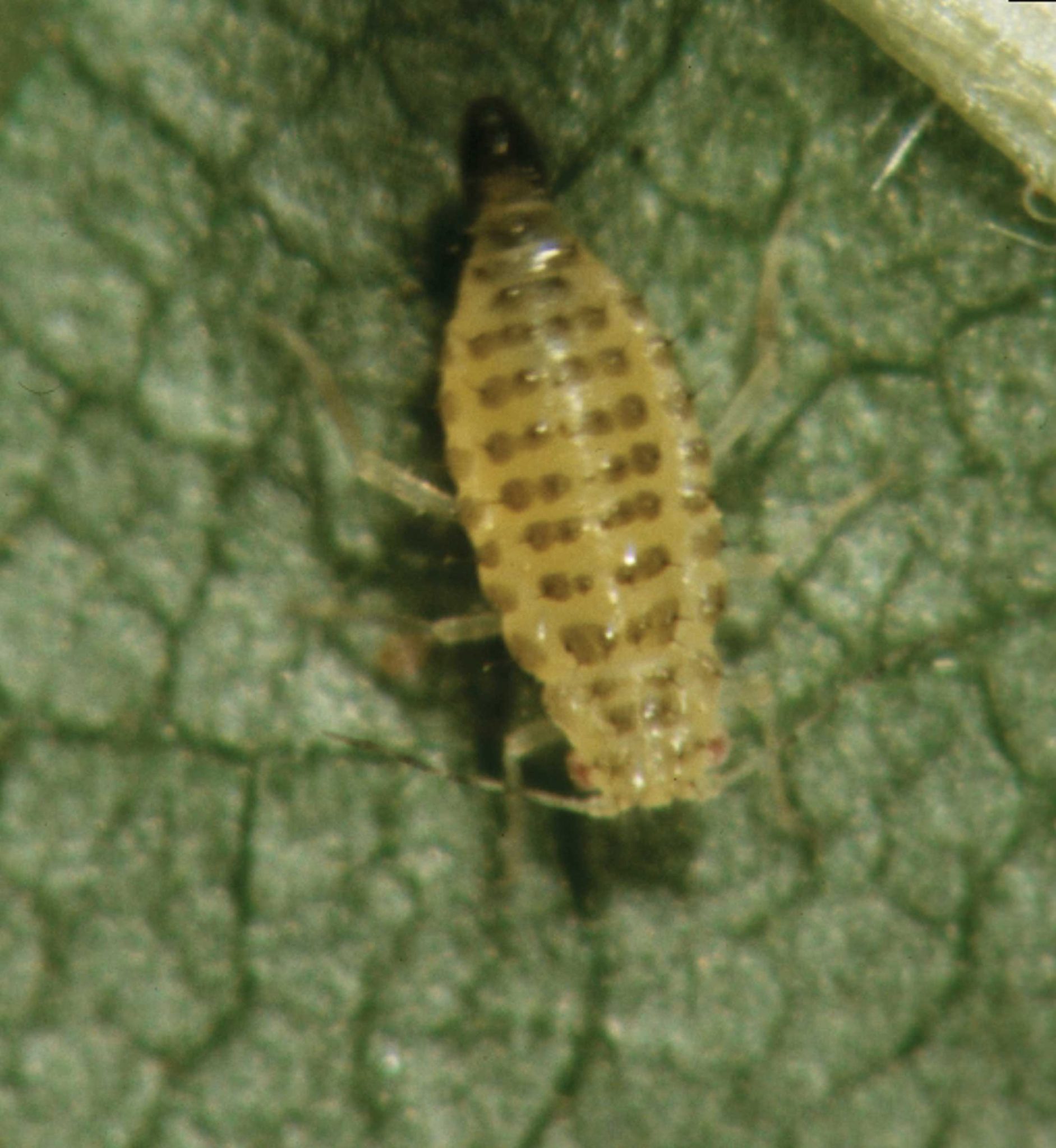
The biggest challenges in California pecan production are two species of aphid, the yellow pecan aphid and the black margined aphid.
According to Mark Hendrixson, past president of the California Pecan Growers Association, California pecan growers are at a disadvantage in aphid control compared to growers in other pecan-producing states. Aphids have a long season in California with no summer rains to wash them from the trees. Growers’ limited options with pesticides also leave them open to crop damage. Sivanto is a new material registered for use in pecan, he said, but the loss of Lorsban has made aphid management an ongoing challenge.
Both species of aphids feed on the underside of leaves. The black margined aphid feeds on major leaflet veins while the yellow pecan aphid feeds on the network of small veins in the leaves. Their feeding extracts large amounts of photosynthate and water from leaves, affecting growth of shoots and roots. Aphids also secrete copious amounts of honeydew on the leaves, promoting the growth of sooty mold which impacts photosynthesis.
The UC IPM guidelines recommend monitoring orchards often for aphid activity. Numbers can increase at a fast pace and can exceed economic thresholds quickly. Scouting should begin in May and continue every four to five days throughout shoot and nut development.
Monitoring involves checking the underside of five compound leaves from at least 10 random trees throughout the orchard to gather a total sample of at least 50 compound leaves.
Before June 1, if honeydew is accumulating, an insecticide application is warranted. From June 1 to August 15, if the total number of aphids exceeds an average of 20 per compound leaf, an application is recommended. From August 15 to leaf fall, an insecticide application is recommended if the total number of aphids exceeds an average of 20 per compound leaf.
Soil application of imidacloprid is an early season aphid preventative before monitoring indicates a need. If aphids are a chronic issue in an orchard, foliar applications later in the season may help slow the development of resistance. With foliar applications, aphids are not subjected to sublethal doses of imidacloprid, which may be the case with soil application. Researchers have some evidence of resistance to imidacloprid in California, Texas and New Mexico.
The UC guidelines also recommend rotating chemicals with a different mode-of-action group number and to not use products with the same mode-of-action group number more than twice per season to help prevent the development of resistance.

Cecilia Parsons
Cecilia Parsons has spent the past 30 years covering agriculture in California for a variety of newspapers, magazines and organizations. During that time she has been fortunate to witness some of the important events that have shaped this diverse industry and worked hard to examine and explain these events for readers.
When Cecilia first moved to the San Joaquin Valley in 1976, her first journalism job was at a small daily newspaper where she covered “farm news.” From there she branched out to writing for a dairy magazine and a regional weekly agriculture publication.
Cecilia is part of a farming family from the rural community of Ducor where she also raises purebred sheep and is attempting to master versatility ranch horse riding.










